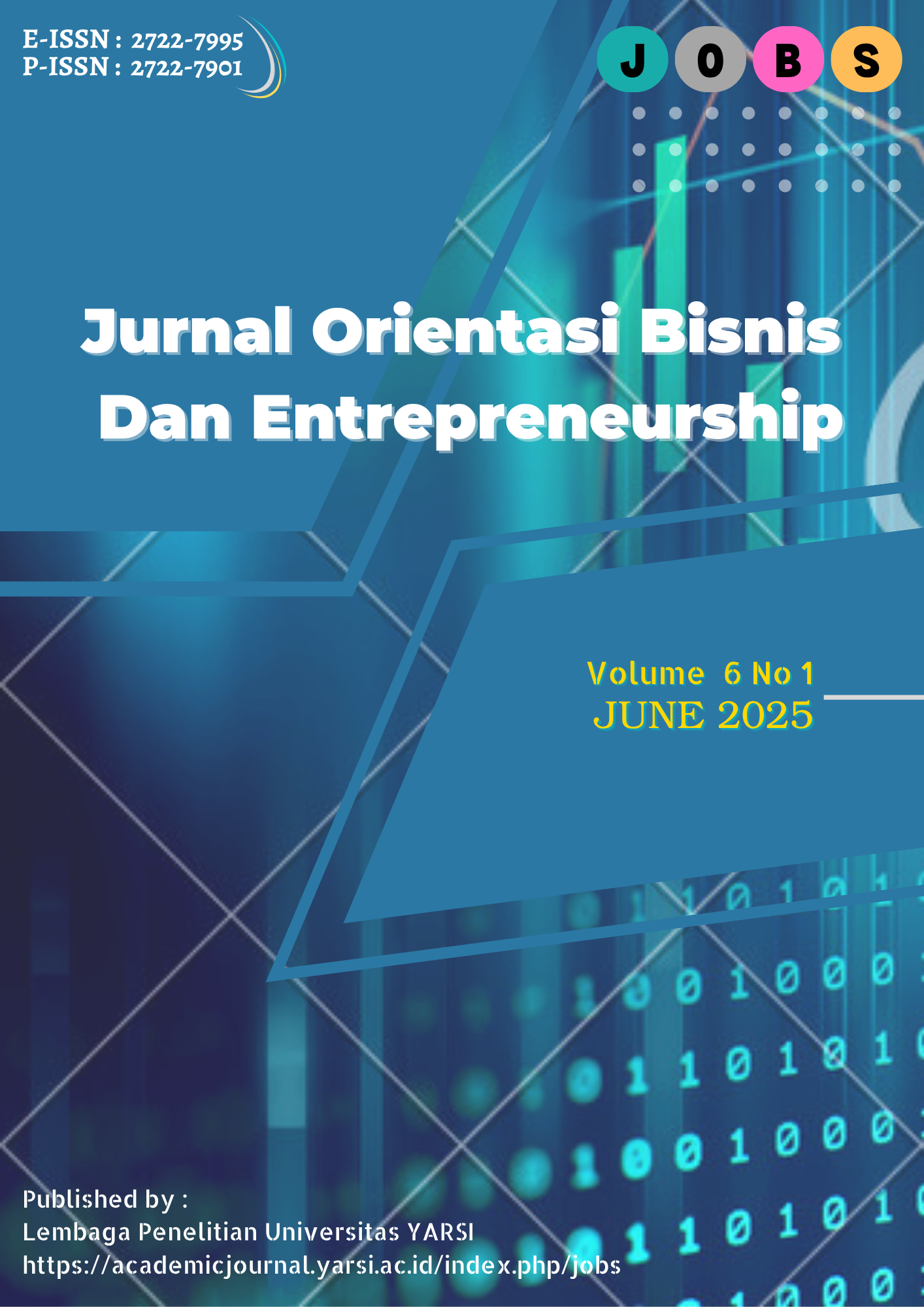Embracing Sustainable E-Wallet for Financial Inclusion in Tanzania
Keywords:
e-wallet, financial inclusion, mobility, reachability, perceived security, sustainability, convenience, adoptionAbstract
Formal financial services. Therefore, its sustainability is essential. The study developed a novel model to investigate its sustainability in Tanzania using a structural equation modelling technique (SEM). Three hundred sixty-one (361) questionnaires were collected and used in the data analysis. Results indicate that perceived usefulness, user satisfaction, and perceived security significantly drive the continued usage of e-wallets. Convenience influences the perceived ease of use and usefulness of the e-wallets, and mobility impacts the perceived ease of use. In contrast, reachability impacts the perceived ease of use and usefulness of the e-wallets. Additionally, the study found that compatibility influences the perceived usefulness of e-wallets, and perceived usefulness, in turn, affects the satisfaction of e-wallet users. Moreover, the study confirmed that perceived security moderates the relationships between satisfaction and continuance usage intention of e-wallets, as well as between perceived usefulness and users' attitudes towards e-wallet usage. The study provides theoretical and practical insights into the sustainability of e-wallets in Tanzania.
References
Akpınar, M. T., & Atak, M. (2025). An Integrated Technology Acceptance Model for Smart City Mobile Applications: Identification of Key Factors and Extension of Technology Adoption. International Journal of Management Studies, 32(1), 109–131. https://doi.org/10.32890/ijms2025.32.1.6
Akter, S., Fosso Wamba, S., & Dewan, S. (2017). Why PLS-SEM is suitable for complex modelling? An empirical illustration in big data analytics quality. Production Planning and Control, 28(11–12), 1011–1021. https://doi.org/10.1080/09537287.2016.1267411
Al-Adwan, A. S. (2020). Investigating the drivers and barriers to MOOCs adoption: The perspective of TAM. Education and Information Technologies, 25(6), 5771–5795.
Alhassan, M. D., Kolog, E. A., & Boateng, R. (2020). Effect of gratification on user attitude and continuance use of mobile payment services: a developing country context. Journal of Systems and Information Technology, 22(4), 353–380. https://doi.org/10.1108/JSIT-01-2020-0010
Al-Qudah, A. A., Al-Okaily, M., Alqudah, G., & Ghazlat, A. (2024). Mobile payment adoption in the time of the COVID-19 pandemic. Electronic Commerce Research, 24(1), 427–451. https://doi.org/10.1007/s10660-022-09577-1
Altay, B. C., & Okumuş, A. (2022). User adoption of integrated mobility technologies: The case of multimodal trip-planning apps in Turkey. Research in Transportation Business & Management, 43, 100706.
Alzboon, M. S., Al-Shorman, H. M., Alka'awneh, S. M. N., Saatchi, S. G., Alqaraleh, M. K. S., Samara, E. I. M., Wahed, M. K. Y. A., Mohammad, S. I., Al-Momani, A. M., & Haija, A. A. A. (2025). The Role of Perceived Trust in Embracing Artificial Intelligence Technologies: Insights from SMEs. In Intelligence-Driven Circular Economy: Regeneration Towards Sustainability and Social Responsibility—Volume 2 (pp. 1–15). Springer.
Amin, A., Muzareba, A. M., Uddin, I., & Mubina, C. (2024). Understanding e satisfaction, continuance intention, and e loyalty toward mobile payment application during COVID 19: an investigation using the electronic technology continuance model. Journal of Financial Services Marketing, 29(2), 318–340. https://doi.org/10.1057/s41264-022-00197-2
Ariffin, S. K., Abd Rahman, M. F. R., Muhammad, A. M., & Zhang, Q. (2021). Understanding the consumer's intention to use the e-wallet services. Spanish Journal of Marketing - ESIC, 25(3), 446–461. https://doi.org/10.1108/SJME-07-2021-0138
Arpaci, I., & Kusci, I. (2025). A Hybrid SEM-ANN Approach for Predicting the Impact of Psychological Needs on Satisfaction with Generative AI Use. Technology, Knowledge and Learning, 1–22.
Baidoun, S. D., & Salem, M. Z. (2024). The moderating role of perceived trust and perceived value on online shopping behavioral intention of Palestinian millennials during COVID-19. Competitiveness Review, 34(1), 125–143. https://doi.org/10.1108/CR-10-2022-0161
Bakar, N. A., Rosbi, S., Norizan, S. N., Yusoff, M. M., & Ali, M. A. (2024). Factors Influencing Customer Acceptance Towards Electronic Wallets (E-Wallets) in Malaysia: Perceived Security as Focus Variable. International Journal of Business and Technology Management, 6(1), 399–412.
Bank of Tanzania. (2022). Tanzania Quick Response Code Standard.
Bank of Tanzania. (2023a). Annual Financial Inclusion Report.
Bank of Tanzania. (2023b). Annual Financial Inclusion Report. www.bot.go.tz
Bansah, A. K., & Darko Agyei, D. (2022). Perceived convenience, usefulness, effectiveness and user acceptance of information technology: evaluating students' experiences of a Learning Management System. Technology, Pedagogy and Education, 31(4), 431–449. https://doi.org/10.1080/1475939X.2022.2027267
Berry, L. L., Seiders, K., & Grewal, D. (2002). Understanding service convenience. Journal of Marketing, 66(3), 1–17.
Bhattacherjee, A. (2001). Understanding Information Systems Continuance: An Expectation-Confirmation Model. MIS Quarterly, 25(3), 351–370.
BoT. (2022a). National Payment Systems: Annual report.
BoT. (2022b). National Payment Systems: Annual report.
Chang, C.-C., Yan, C.-F., & Tseng, J.-S. (2012). Perceived convenience in an extended technology acceptance model: Mobile technology and English learning for college students. Australasian Journal of Educational Technology, 28(5), 809–826.
Chen, H., & Zhou, X. (2025). Understanding the Influence of Ride-Sharing Value on Consumers' Continuance Intention. Journal of Services Marketing, 39(2), 95–111.
Chen, J. J., Adams, C., & Introduction, I. (1986). User Acceptance of Mobile Payments: A Theoretical Model for Mobile Payments.
Chen, Q., Feng, Y., Liu, L., & Tian, X. (2019). Understanding consumers' reactance of online personalized advertising: A new scheme of rational choice from a perspective of negative effects. International Journal of Information Management, 44, 53–64.
Chen, S.-C., Chung, K. C., & Tsai, M. Y. (2019). How to achieve sustainable development of mobile payment through customer satisfaction the SOR model. Sustainability, 11(22), 6314.
Daragmeh, A., Sági, J., & Zéman, Z. (2021a). Continuous intention to use e-wallet in the context of the covid-19 pandemic: Integrating the health belief model (hbm) and technology continuous theory (tct). Journal of Open Innovation: Technology, Market, and Complexity, 7(2), 132.
Daragmeh, A., Sági, J., & Zéman, Z. (2021b). Continuous intention to use e-wallet in the context of the covid-19 pandemic: Integrating the health belief model (hbm) and technology continuous theory (tct). Journal of Open Innovation: Technology, Market, and Complexity, 7(2), 132.
Daragmeh, A., Saleem, A., Bárczi, J., & Sági, J. (2022). Drivers of post-adoption of e-wallet among academics in Palestine: An extension of the expectation confirmation model. Frontiers in Psychology, 13(September), 1–14. https://doi.org/10.3389/fpsyg.2022.984931
Davis, F. (1989). Perceived Usefulness, Perceived Ease of Use, and User Acceptance of Information Technology. MIS Quarterly, 13(3), 319–340.
Deanna, M., Reza, M., Tan, S., Chong, L., & Ong, H. (2024). International Journal of Information Continuance usage intention of e-wallets: Insights from merchants. International Journal of Information Management Data Insights, 4(2), 100254. https://doi.org/10.1016/j.jjimei.2024.100254
El Haddad, G., Aimeur, E., & Hage, H. (2018). Understanding trust, privacy and financial fears in online payment. 2018 17th IEEE International Conference on Trust, Security and Privacy in Computing and Communications/12th IEEE International Conference on Big Data Science and Engineering (TrustCom/BigDataSE), 28–36.
Foroughi, B., Iranmanesh, M., & Hyun, S. S. (2019). Understanding the determinants of mobile banking continuance usage intention. Journal of Enterprise Information Management, 32(6), 1015–1033. https://doi.org/10.1108/JEIM-10-2018-0237
Franque, F. B., Oliveira, T., & Tam, C. (2021). Understanding the factors of mobile payment continuance intention: empirical test in an African context. Heliyon, 7(8).
FSDT. (2024, November). Digital Financial Services and Financial Technology in Tanzania.
Hair, J. F., Sarstedt, M., Pieper, T. M., & Ringle, C. M. (2012). The use of partial least squares structural equation modeling in strategic management research: a review of past practices and recommendations for future applications. Long Range Planning, 45(5–6), 320–340.
Hair Jr, J. F., Black, W. C., Babin, B. J., & Anderson, R. E. (2010). Multivariate data analysis. In Multivariate data analysis (p. 785).
Hartono, E., Holsapple, C. W., Kim, K.-Y., Na, K.-S., & Simpson, J. T. (2014). Measuring perceived security in B2C electronic commerce website usage: A respecification and validation. Decision Support Systems, 62, 11–21.
Henseler, J., Ringle, C. M., & Sarstedt, M. (2015). A new criterion for assessing discriminant validity in variance-based structural equation modeling. Journal of the Academy of Marketing Science, 43(1), 115–135.
Henseler, J., Ringle, C. M., & Sinkovics, R. R. (2009). The use of partial least squares path modeling in international marketing. In New challenges to international marketing (Vol. 20, pp. 277–319). Emerald Group Publishing Limited.
Hopalı, E., Vayvay, Ö., Kalender, Z. T., Turhan, D., & Aysuna, C. (2022). How Do Mobile Wallets Improve Sustainability in Payment Services? A Comprehensive Literature Review. In Sustainability (Switzerland) (Vol. 14, Issue 24). MDPI. https://doi.org/10.3390/su142416541
Jebarajakirthy, C., & Shankar, A. (2021). Impact of online convenience on mobile banking adoption intention: A moderated mediation approach. Journal of Retailing and Consumer Services, 58, 102323.
Kang, H. (2021). Sample size determination and power analysis using the G* Power software. Journal of Educational Evaluation for Health Professions, 18(17), 1–12.
Kar, A. K. (2021). What Affects Usage Satisfaction in Mobile Payments? Modelling User Generated Content to Develop the "Digital Service Usage Satisfaction Model". Information Systems Frontiers, 23(5), 1341–1361. https://doi.org/10.1007/s10796-020-10045-0
Khalilzadeh, J., Bulent, A., & Bilgihan, A. (2020). Computers in Human Behavior Security-related factors in extended UTAUT model for NFC based mobile payment in the restaurant industry. 70(2017), 460–474.
Kilani, A. A.-H. Z., Kakeesh, D. F., Al-Weshah, G. A., & Al-Debei, M. M. (2023). Consumer post-adoption of e-wallet: An extended UTAUT2 perspective with trust. Journal of Open Innovation: Technology, Market, and Complexity, 9(3), 100113.
Kim, C., Mirusmonov, M., & Lee, I. (2013). An empirical examination of factors influencing the intention to use mobile payment. 26(2010), 310–322. https://doi.org/10.1016/j.chb.2009.10.013
Kim, C., Tao, W., Shin, N., & Kim, K. (2010). Electronic Commerce Research and Applications An empirical study of customers' perceptions of security and trust in e-payment systems. Electronic Commerce Research and Applications, 9(1), 84–95. https://doi.org/10.1016/j.elerap.2009.04.014
Kock, F., Berbekova, A., & Assaf, A. G. (2021). Understanding and managing the threat of common method bias: Detection, prevention and control. Tourism Management, 86, 104330.
Kock, N. (2015). Common method bias in PLS-SEM: A full collinearity assessment approach. International Journal of E-Collaboration (Ijec), 11(4), 1–10.
Koloseni, D., & Mandari, H. (2017). Why Mobile Money Users Keep Increasing? Investigating the Continuance Usage of Mobile Money Services in Tanzania. Journal of International Technology and Information Management, 26(2), 117–143.
Koloseni, D., & Mandari, H. (2025). Towards Sustainable Adoption: Investigating QR Codes Mobile Payment Continuance in Tanzania. Journal of Social and Political Sciences, 8(1). https://doi.org/10.31014/aior.1991.08.01.547
Kurniasari, F., & Abd Hamid, N. (2020). The effect of perceived usefulness, perceived ease of use, trust, attitude and satisfaction into continuance of intention in using Alipay. Management & Accounting Review (MAR), 19(2), 132–150.
Law, M. (2020). Continuance intention to use Facebook: understanding the roles of attitude and habit. Young Consumers, 21(3), 319–333. https://doi.org/10.1108/YC-10-2019-1054
Liébana-Cabanillas, F., Kalinic, Z., Muñoz-Leiva, F., & Higueras-Castillo, E. (2024). Biometric m-payment systems: A multi-analytical approach to determining use intention. Information and Management, 61(2). https://doi.org/10.1016/j.im.2023.103907
Lim, W. (2024). A typology of validity: content, face, convergent, discriminant, nomological and predictive validity. Journal of Trade Science, 12(3), 155–179. https://doi.org/10.1108/jts-03-2024-0016
Lim, W. L., Munikrishnan, U. T., Leong, C. M., Hiew, L. C., Leong, M. W., & Yang, L. (2024a). Do you want a secure e-wallet? Understanding the role of risk and security in e-wallet continuance intention. Information and Computer Security, 32(3), 304–321. https://doi.org/10.1108/ICS-05-2023-0085
Lim, W. L., Munikrishnan, U. T., Leong, C. M., Hiew, L. C., Leong, M. W., & Yang, L. (2024b). Do you want a secure e-wallet? Understanding the role of risk and security in e-wallet continuance intention. Information and Computer Security, 32(3), 304–321. https://doi.org/10.1108/ICS-05-2023-0085
Lim, W., Munikrishnan, U. T., Leong, C.-M., Hiew, L.-C., Leong, M.-W., & Yang, L. (2024). Do you want a secure e-wallet? Understanding the role of risk and security in e-wallet continuance intention. Information & Computer Security, 32(3), 304–321.
Liu, J., Sun, H. L., Kuang, L., & Zheng, J. (2025). A longitudinal study of user continuance intention to use public digital cultural services. Library and Information Science Research, 47(1). https://doi.org/10.1016/j.lisr.2025.101343
Mai, X. T., & Nguyen, T. (2024). Switching behaviors in peer-to-peer mobile payment applications: the role of sociability. Journal of Systems and Information Technology, 26(1), 1–30.
Maryam, S. Z., Ahmad, A., Aslam, N., & Farooq, S. (2022). Reputation and cost benefits for attitude and adoption intention among potential customers using theory of planned behavior: an empirical evidence from Pakistan. Journal of Islamic Marketing, 13(10), 2090–2107. https://doi.org/10.1108/JIMA-03-2021-0059
Mensah, I. K. (2021). Predictors of the continued adoption of WECHAT mobile payment. In Research Anthology on E-Commerce Adoption, Models, and Applications for Modern Business (pp. 860–884). IGI Global.
Mng’ong’ose, W. (2017). Influence of Consumer Trust on Mobile Payments Adoption: The Case of Urban Tanzania (12).
Nurcahyo, R., Prabuwono, A. S., Fainusa, A. F., Wibowo, N., Habiburrahman, M., & Hindriyandhito, K. (2023). Enhancing User Satisfaction in Indonesia's e-wallet Market: A Comprehensive Analysis of Factors and Priorities. Human Behavior and Emerging Technologies, 2023. https://doi.org/10.1155/2023/8864865
Park, D. Y., & Kim, H. (2023). Determinants of Intentions to Use Digital Mental Healthcare Content among University Students, Faculty, and Staff: Motivation, Perceived Usefulness, Perceived Ease of Use, and Parasocial Interaction with AI Chatbot. Sustainability (Switzerland), 15(1). https://doi.org/10.3390/su15010872
Qatawneh, N., Al-Okaily, A., Al-Okaily, M., & Ur Rehman, S. (2024). Exploring the antecedent factors of continuous intention to use mobile money: insights from emerging markets. Digital Policy, Regulation and Governance, July. https://doi.org/10.1108/DPRG-04-2024-0080
Reza, M. D. S. binti M., Tan, S. H., Chong, L. L., & Ong, H. B. (2024). Continuance usage intention of e-wallets: Insights from merchants. International Journal of Information Management Data Insights, 4(2). https://doi.org/10.1016/j.jjimei.2024.100254
Rogers, E. (1995). Diffusion of innovations. Free Press.
Roh, M., & Park, K. (2019). Adoption of O2O food delivery services in South Korea: The moderating role of moral obligation in meal preparation. International Journal of Information Management, 47, 262–273.
Ryu, S., Cheng, K., & Schreieck, M. (2022). User Value Perception of Native Apps versus Mini Programs: A Means-End Theory Approach. Journal of Service Management Research, 6(3), 167–180. https://doi.org/10.5771/2511-8676-2022-3-167
Schierz, P. G., Schilke, O., & Wirtz, B. W. (2010). Understanding consumer acceptance of mobile payment services: An empirical analysis. Electronic Commerce Research and Applications, 9(3), 209–216. https://doi.org/10.1016/j.elerap.2009.07.005
Schreieck, M., Ou, A., & Krcmar, H. (2023). Mini-app Ecosystems. Business & Information Systems Engineering, 65(1), 85–93.
Sedera, D., & Tan, F. (2005). User Satisfaction: An Overarching Measure of Enterprise System Success. Proceedings of Pacific Asia Conference on Information Systems, 963–976.
Setälä, M., Heilala, V., Sikström, P., & Kärkkäinen, T. (2025). The Use of Generative Artificial Intelligence for Upper Secondary Mathematics Education Through the Lens of Technology Acceptance. https://doi.org/10.1145/3672608.3707817
Shetu, S. N. (2025). Determinants of generation Z consumers' mobile online shopping apps continuance intention to use during COVID-19 and beyond-an empirical study. Future Business Journal, 11(1), 25.
Statistica. (2025, March). Share of Population with an Account at a Financial Institution in Tanzania from 2018 to 2024. https://www.statista.com/statistics/1246740/bank-account-owners-tanzania
The Electronic Money Regulations, 1 (2015).
Tjandra, R., Alamsyah, D. P., & Susanti, L. (2022). Perceived mobility of mobile payments: Mediation model of user usefulness. 2021 International Seminar on Machine Learning, Optimization, and Data Science (ISMODE), 228–232.
wum, K. K., Kosiba, J. P. B., Hinson, R. E., Gabrah, A. Y. B., & Assabil, E. N. (2023). Determining mobile money service customer satisfaction and continuance usage through service quality. Journal of Financial Services Marketing, 28(1), 30–42.
Wang, P., & Hou, Y. (2025). The Effects of Hotel Employees' Attitude Toward the Use of AI on Customer Orientation: The Role of Usage Attitudes and Proactive Personality. Behavioral Sciences, 15(2), 127.
Wang, Y., Fan, M., Liu, J., Tao, J., Jin, W., Wang, H., Xiong, Q., & Liu, T. (2024). Do as you say: Consistency Detection of Data Practice in Program Code and Privacy Policy in Mini-app. IEEE Transactions on Software Engineering.
Were, M., Odongo, M., & Israel, C. (2024). Gender Disparities in Financial Inclusion in Tanzania. In O. Morrissey, J. Semboja, & M. Were (Eds.), Sustaining Tanzania's Economic Development: A Firm and Household Perspective. Oxford University Press.
Wu, C. G., & Ho, J. C. (2022). The influences of technological characteristics and user beliefs on customers' perceptions of live chat usage in mobile banking. International Journal of Bank Marketing, 40(1), 68–86. https://doi.org/10.1108/IJBM-09-2020-0465
Zhang, J. (2022a). Cash, credit, or phone? An empirical study on the adoption of mobile payments in the United States. https://doi.org/10.1002/mar.21282
Zhang, J. (2022b). Cash, credit, or phone? An empirical study on the adoption of mobile payments in the United States. https://doi.org/10.1002/mar.21282
Downloads
Published
How to Cite
Issue
Section
License
Copyright (c) 2025 Herman Mandari, Daniel Koloseni

This work is licensed under a Creative Commons Attribution-ShareAlike 4.0 International License.

This work is licensed under a CC Attribution-ShareAlike 4.0

 Herman Mandari
Herman Mandari
 Computer Science Department, The Institute of Finance Management, Tanzania
Computer Science Department, The Institute of Finance Management, Tanzania











